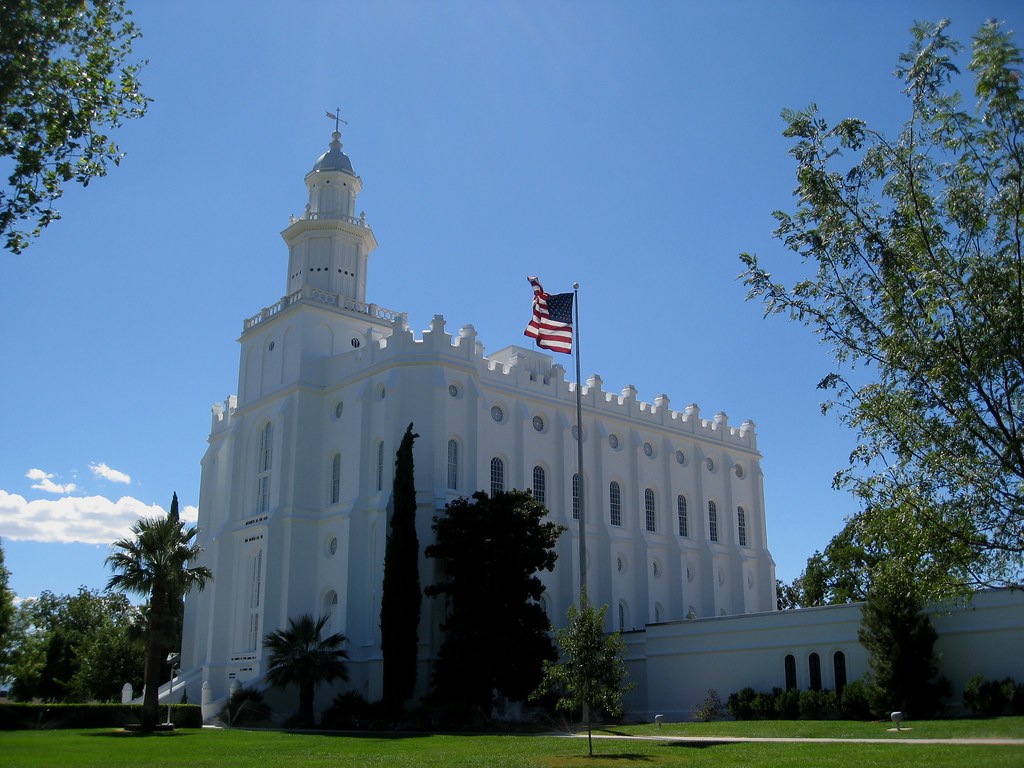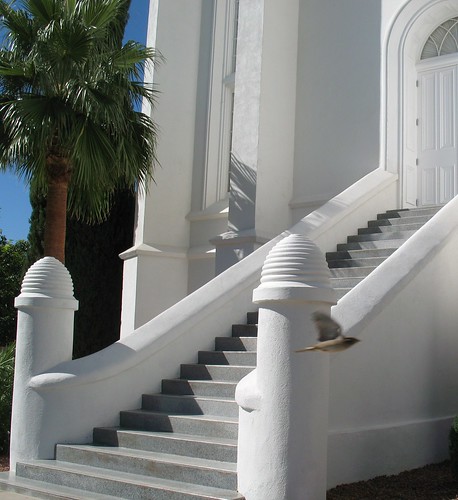The Payson Temple looks like it may be a modified version of the Draper Utah and Gilbert Arizona Temples, but it could be unique. The Trujillo Peru Temple is clearly the same style as the Cordoba Argentina and Phoenix Arizona Temples. Then there is the Philadelphia Pennsylvania Temple which is one of the new two-spire style temples along with the Kansas City Missouri Temple, Brigham City Utah Temple, Rome Italy Temple and at least one other temple that hasn't had its design publicly revealed. As a refresher, here are renderings of these 4 temples:
 |
| Kansas City Missouri Temple Rendering |
 |
| Brigham City Utah Temple Rendering |
 |
| Rome Italy Temple Rendering |
 |
| Philadelphia Pennsylvania Temple Rendering |
I think this new style of temple is distinctly Latter-day Saint and iconic. These temples are taller with 3-4 stories in addition to a basement. Their shape accentuates their height, as do the twin spires. I like the vertical soaring nature of these temples. The first two make good use of detailed architectural precast concrete while Rome and Philadelphia appear to use stone. Either way, the detailing is done well.
I like how the Kansas City Missouri Temple and Rome Italy Temple are both modern. Rome seems more modern with its numerous curves, sleek design, and cutaway spire. I think this was a good choice as Rome is so overwhelmed with classical and other architecture that it would have been difficult for the temple to stand out (in a good way) and not look contrived with classical or neoclassical architecture. The Kansas City Temple, on the other hand, has a modern and somewhat simple exterior, but uses traditional pyramidal spires in addition to arches to visually link it to the Salt Lake and other pioneer temples. This is fitting as it is being built where a lot of early church history occurred.
The Brigham City Utah Temple is obviously meant to look like a pioneer style temple. The church has stated that it is a mix between the Salt Lake Temple, St. George Temple, Logan Temple, and Manti Temple. This helps it fit in with the Box Elder Tabernacle across the street and with the history of the area. At the same time, if you look at the temple closely you'll notice that it is a modern interpretation of the pioneer style. Precast concrete is used. Also, the way the spires taper, concrete details are recessed, and other elements of the building are shaped, are very modern. Crenelations have been replaced by recessed triangles in the concrete panels. The buttressing, although present, is somewhat subdued. So I see the Brigham City Temple as a successful blend of the historic pioneer style temples and present day architecture.
The Philadelphia Pennsylvania Temple is now the most classical (really neo-classical) of these temples (or any for that matter). It looks like it could easily be 200 years old, and not like a modern take on a 200 year old building. This appears to be intentional. It helps the temple fit in a very historical city. In the rendering you can see that the temple borrows elements from the building across the street (I think a court building). It will also fit in with a nearby Catholic cathedral and other architecture in the area. The spires should seem familiar. They definitely fit in with spires in the city. I can see that the architects have obviously borrowed elements from the spire of Independence Hall, also in Philadelphia, where the Declaration of Independence and U.S. Constitution were written and signed and where the Liberty Bell once hung.
I love the fine details of the Philadelphia Pennsylvania Temple, and look forward to seeing them in more detail. I love the fluted columns with Corinthian capitals (I hope they are unique capitals). I like the mixture or rectangular and cylindrical columns and the clustering of columns at the front. The window variety is also interesting. I particularly like the elliptical windows along the fourth level. There are other details such as the short parapet railing running along the roof line and repeated at two heights on each tower. I also like the floral bunches (would you call this a wreath or a garland or something else?) on the towers and look forward to seeing what types of flowers are put into them. I also look forward to seeing the fine details on the cornice.
I also like the large details of the temple. The corners of the building have a weightier look that makes the building appear strong while at the same time making the center windows seem even more open and beautiful. The first level is also made of massive blocks which gives it a weighty look. This is a good architectural trick to give balance to an exterior and makes the temple look enduring. The soaring spires, combined with the 4 stories and somewhat slender proportions, make the temple appear tall and grand in a great way.
I love the symbolism of this temple with its two spires based on Independence Hall. This is fitting as Pennsylvania is where the U.S. government was set up with the Declaration of Independence and the U.S. Constitution which we believe to be inspired by God. The spires represent the priesthoods and remind us that Pennsylvania is also where the government of God, the priesthood, was restored to the earth in 1829. The Aaronic Priesthood and the Melchizedek Priesthood were restored to the earth by John the Baptist and Peter, James and John respectively near Harmony Pennsylvania.
The whole interior of this temple should be interesting. The Manhattan New York Temple's interior would fit the exterior architecture perfectly. It borrowed the neoclassical elements from the Salt Lake Temple. I would be happy if the Philadelphia Pennsylvania Temple also borrowed interior elements from the Salt Lake Temple. The murals could also show the area around Harmony, Pennsylvania where the priesthoods were restored and where Joseph Smith and Oliver Cowdery were baptized. Depictions of the priesthood restorations and baptisms would be great in murals. Much of the translation of The Book of Mormon also happened in this state and should at least show up in a painting. Also, the Founding Fathers who met at Independence Hall appeared in the St. George Utah Temple to have their temple work done. I would add a picture of that event somewhere in the temple.
I really like the new two-spire temple style and hope that the church uses it for a while. I think it is the best style in a long time. Please comment and let us know what you think about this style of temple, the individual temples, or anything else in this post.























